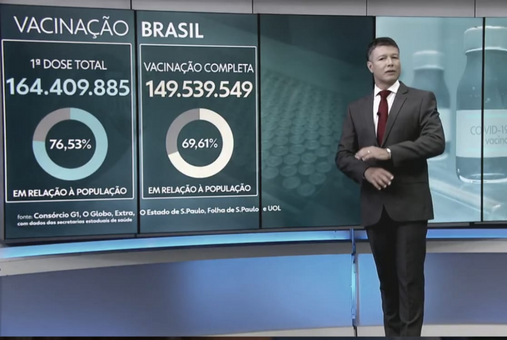
Journalists and fact-checking agencies from Brazil discussed coalitions and measures taken during the 2022 presidential elections at the Global Fact 10 summit. The responsibility of social media platforms or text messaging apps in the spread of disinformation was among topics discussed.

LatAm Journalism Review (LJR) summarized three panels dedicated to press freedom at the 12th edition of a major human rights and technology conference, RightsCon, held this year in Costa Rica. Journalists from Central America and the rest of Latin America discussed the challenges and opportunities facing the industry.

Seven podcast festivals comprise the Ibero-American Circuit of Podcast Festivals (CIFESPOD, by its Spanish acronym). The circuit’s goals include gaining recognition of podcasting as a cultural industry, joining forces for fundraising, creating a Latin American award for best podcast, and strengthening the production of narrative journalism pieces in audio.
In May, a new cycle of the Climate Tracker Climate Journalism Mentoring Program began. It seeks to bring together journalists from Latin America and the Caribbean to produce climate stories, with a special focus on just energy transition. LatAm Journalism Review (LJR) spoke with editors and alumni of the program to learn more about the initiative.

Considering the media crisis in Venezuela, Academia Prodavinci, the educational division of the investigative journalism organization, launched a journalist training program this year. It seeks to train journalists and students in topics such as health, economics and gender inequality in order to contribute to the development of a more solid, contextualized and analytical journalism.

The recently formed Paraguayan Alternative Media Network was put to the test during the general election this past April 30. The network seeks to give visibility to issues underreported by traditional media through collaborative journalism and fact-checking.

Journalists from other continents seeking to cover Latin America should identify patterns in common among the different countries, find points of connection with the realities of other regions and collaborate with local journalists, said María Teresa Ronderos, Alejandra Sánchez Inzunza and Silvia Viñas, guests at the International Journalism Festival in Perugia, Italy.

The Network of Venezuelan Women Journalists held its first conference with the goal of discussing feminist journalism and a gender-based approach. However, during the three days of the event, topics such as Indigenous struggles, climate crisis, mental health, humanitarian emergency, human trafficking and sexual and reproductive rights were also discussed.

In June 2020, with Brazil rapidly accumulating cases and deaths from COVID-19, the federal government acted to hide the reality of the pandemic in the country. Six news outlets responded by establishing a consortium to release COVID-19 data. It ended in January, but leaves behind lessons on the value of transparency and collaboration.

InfoAmazonia, a trilingual platform devoted to covering the Amazon Rainforest, has launched a Citizen Network of news outlets based in the Brazilian Amazon that cover socio-environmental issues. The idea is to strengthen local journalism in the region and expand media audiences, improving the content and bringing it in and around the Amazon to local populations and a global audience.

In journalism, participation and collaboration are essential. LatAm Journalism Review (LJR) has created a list of the most important events for journalists in Latin America to be held during 2023. Buenos Aires, Bogota, Quito, and Mexico City, are some of the expected venues.

The Global Investigative Journalism Network (GIJN) worked with a team of experts from the Ford Foundation to develop the Journalist Safety Assessment Tool (JSAT), which provides an online diagnostic of an organization's physical and cyber security strategies, with recommendations on how to improve them. The network recently launched a version of JSAT in Spanish for colleagues in Latin America.